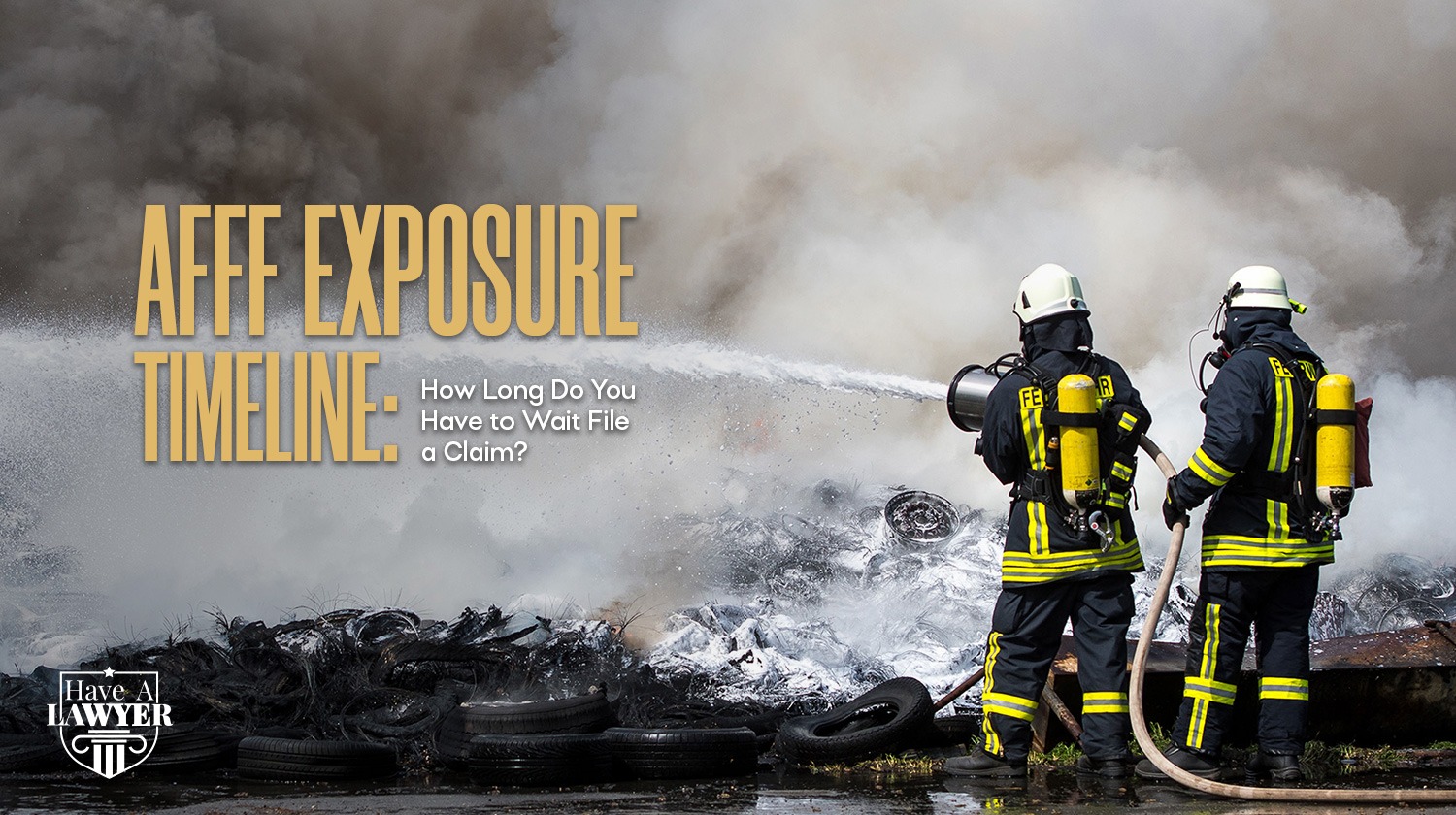When it comes to extinguishing fires, various types of fire extinguishers are available on the market, including those that use water, mist, and foam. The most popular fire extinguisher used by military personnel, firefighters, and airport workers is a foam-based extinguisher, constituting Aqueous Film-Foam. Ironic to its use, which is for saving lives, this foam fire extinguisher contains per- and polyfluoroalkyl substances that are highly harmful to anyone who uses it. Reports reveal that AFFF has caused some serious health threats like cancer, liver damage, thyroid disease, and even problems related to fertility.
A huge number of people have now become acquainted with the harm that AFFF causes, and therefore, the number of AFFF lawsuits being filed across the United States has also witnessed a rise. If you or someone you know had to suffer from serious illnesses caused by the use of AFFF, the timeline of filing a claim becomes important for you. In this blog, we shall discuss the complexities of this lawsuit, details about its filing timelines, exceptions, limitations, and your fundamental rights involved in the mass tort cases related to AFFF exposure.
Understanding AFFF Lawsuit
AFFF lawsuit targets the manufacturers of firefighting foam, who not only showed utmost negligence by producing such equipment, but also by failing to notify of its detrimental effects, putting severe human lives at risk.
AFFF lawsuits can be declared as mass tort cases because here, a number of victims come together who have had similar experiences and damages to file claims against the manufacturing companies. Each case is judged separately; however, the plaintiff gains an additional edge over shared evidence, expert testimonies, and other legal resources.
What is the AFFF lawsuit statute of limitations?
When a plaintiff is filing an AFFF lawsuit, it becomes crucial for them to know and understand its statute of limitations. This reveals how long a person has to file their claim. However, the time limit differs, depending upon the state, usually ranging between 2 to 4 years since the date of:
- Diagnosis of the illness
- Discovery of the connection between the illness and AFFF exposure
- Death of a person (in unfortunate cases of wrongful deaths)
Understanding the statute of limitations is a tricky landscape, as it so happens that a person can develop symptoms of the related illness years after they used AFFF. Here is where the factor of discovery of the connection comes into play.
The Discovery Rule In The Statute Of Limitations
The factor of discovery holds great importance for a plaintiff filing a case. Some of the PFAS-related illnesses, like kidney cancer, testicular cancer, and thyroid disease can take years for a person to show symptoms, which is why discovery rule becomes crucial, giving plaintiffs the flexibility they deserve.
That being said, a person cannot delay the filing of a case after discovering the diagnosis. Unreasonable delay cannot be justified legally.
Key Dates in the AFFF Exposure Timeline
If you’re thinking about filing a claim, here’s a general AFFF exposure timeline to help you understand when and how to act:
1. Period of Exposure
This is the time when you were actively exposed to AFFF—typically while working in fire departments, airports, or military bases. In some cases, residents living near military or industrial sites may also qualify due to contaminated groundwater.
2. Onset of Symptoms or Illness
This could be years later, and often includes diagnoses like:
- Kidney or testicular cancer
- Thyroid problems
- Ulcerative colitis
- Liver damage
3. Medical Diagnosis and Treatment
As soon as you’re diagnosed, your legal clock may start ticking. It is crucial to keep medical records and start gathering any documentation that links your work or location with AFFF exposure.
4. Discovery of Link to AFFF
This stage involves connecting your illness to AFFF through research, legal updates, or a lawyer’s help. The discovery rule might apply here.
5. Filing a Claim
Once you’ve established the connection, don’t delay. Speak with an attorney to initiate your AFFF lawsuit before the statute of limitations expires in your state.
Who Can File an AFFF Lawsuit?
You may be eligible to file a claim if:
- You worked in a profession regularly exposed to AFFF (firefighter, military personnel, airport staff).
- You lived near a military or industrial site known for PFAS contamination.
- You were diagnosed with a qualifying illness after long-term exposure.
- A loved one died from a PFAS-related disease.
Importantly, you don’t need to be actively employed anymore to file. Retirees and family members of deceased individuals can still participate in these mass tort cases.
Why Timely Action Matters
Delaying action can permanently bar you from seeking compensation. Even if you’re unsure whether you qualify, speaking to an attorney sooner rather than later helps protect your rights.
Some mass tort cases may also reach settlement stages quickly once a critical mass of plaintiffs is reached, making early action even more crucial.
What Compensation Can You Seek?
Filing an AFFF lawsuit may entitle you to compensation for:
- Medical bills
- Lost wages or earning capacity
- Pain and suffering
- Wrongful death damages (if applicable)
- Future medical monitoring and treatments
Compensation varies depending on the severity of the illness, impact on life, and evidence of exposure.
The Role of Mass Tort Cases
The AFFF litigation is part of a larger group of mass tort cases across the country. This structure allows plaintiffs to benefit from:
- Shared expert testimony
- Streamlined evidence gathering
- Faster processing times
- Increased negotiation power
Many AFFF cases have been consolidated in Multi-District Litigation (MDL) in federal court to efficiently manage the volume of claims. If you join an MDL, your case remains independent but benefits from collective legal strategies.
Steps to Take Now
If you suspect AFFF exposure led to your illness, here’s what to do:
1. Gather Evidence
Collect employment records, medical diagnoses, and documents proving your exposure.
2. Speak to a Mass Tort Attorney
Choose a lawyer experienced in AFFF lawsuits and mass tort cases. They can guide you through the filing process, statute limitations, and potential compensation.
3. Act Promptly
The longer you wait, the harder it becomes to prove your case or meet the legal deadlines.
Conclusion
The timeline for filing an AFFF lawsuit is limited and varies based on several factors, including when you were diagnosed and when you learned of the connection between AFFF and your illness. With mounting evidence of PFAS toxicity and growing success in mass tort cases, now is the time to evaluate your eligibility and take legal action.
If you or someone you love was exposed to AFFF and developed a serious health condition, don’t wait. Reach out to Have A Lawyer for a qualified attorney to begin your claim and seek the justice you deserve.


